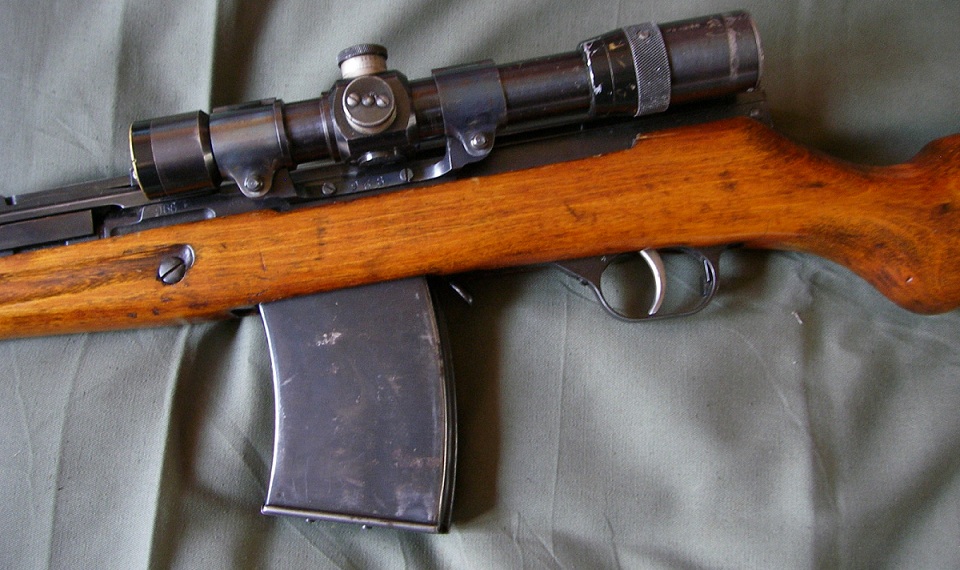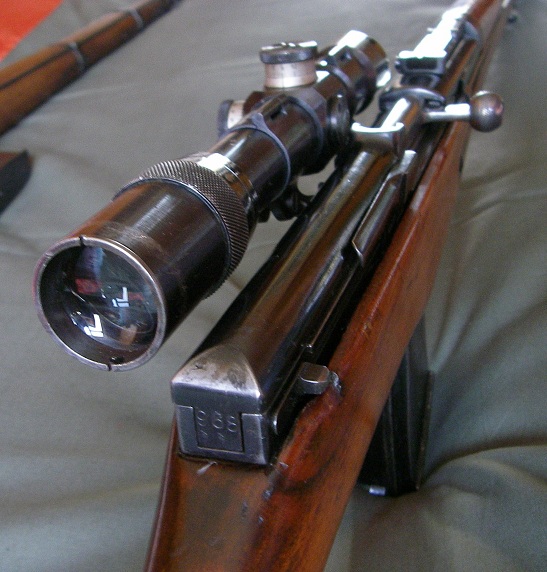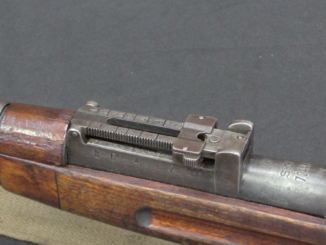Russia (or the USSR, for these purposes) had an early self-loading rifle in the 1916 Federov, but it was not a satisfactory combat weapons, for several reasons. The Soviet military held a number of trials for a new automatic rifle in the late 1920s and 1930s, and the winner was the Automaticheskaya Vintovka Simonova obraztsa 1936 goda, or Simonov Automatic Rifle, model of 1936. The weapon was adopted as the AVS-36, and put into production. However, it was quickly realized that the design was not a particularly good one. It was complex and expensive to manufacture and prone to malfunctioning in the field. Another trial was held in 1938 between an updated version of the AVS, a rifle designed by Tokarev, and one by a designer named Rukavishnikov. In this trial (and probably with the help of some political intrigue), the Tokarev design won out, and was adopted as the SVT-38.

The AVS-36 was made in relatively small numbers (35,000-65,000, depending on which source you want to believe) and saw use primarily in the Winter War between Finland and the USSR. At the end of that conflict, most of the rifles were collected up and warehoused, to be destroyed by 1943/44. A decent number were captured by Finnish forces and survived that way. The Finnish military was not particularly impressed with the design, but it was popular with some Finnish soldiers.
Functionally, the AVS-36 is a short-stroke gas operated action, with a locking block that slides vertically up and down in the receiver to lock and unlock. The gas system is very similar to the SVT-38/40, but the locking is quite different.
The AVS-36 is most easily recognized by its large and distinctive muzzle brake, which was actually not all that effective. It used a 15-round magazine, and could fire in either semi or full automatic mode. In full auto, it ran at about 800 rounds/minute and was basically uncontrollable (it is not coincidental that it replacement, the SVT-38, was made in semiauto only). A small number of sniper variants of the AVS-36 were made, using a scope mounted off to the left of the bore (to not interfere with the design’s clip loading and upward ejection).


We have a gallery of more photos on the Simonov AVS-36 page in the Vault.



Michigan veterans of the ‘Polar Bear’ Division, which guarded Allied war material in Murmansk from 1917 -1920 reported that Model 1916 Federov rifles were issued extensively to Soviet commissars. The commissars used their Federovs to ‘incentivise’ Russian soldiers who were reluctant to attack the Michigan troops.
The Michigan veterans thought that the Federovs worked well, but they did not ‘liberate’ them due to the lack of 6.5x50mmSR ammunition. The ‘Polar Bears’ were quite fond of the Moisin and the Russian Maxim, which were their standard armament due to their reliable performance at – 60 C.
Oh my aching… Everything ever written about Russian troops from Suvorov to the Ukraine today has officers driving the balky muzhik into the fray at gunpoint. Meantime how many wars have the Russ kids lost? Give grampa’s tales the burial they deserve: under six feet of bulls___
You can definitely tell that is is a Simonov design. Take a look at the back of the receiver cover, it just screams SKS.
Fascinating post, and on a specific rifle I was expecting to see being covered here since long! Thanks, Ian!
A Spanish author has recently claimed that a few AVS-36 were sent to Spain during the Civil War, presumably for operational trial purposes (at the hands of Soviet advisers, I suppose); I haven’t found any confirmation of any such shipment in recent Russian sources though, and would like to hear opinions from other readers on this.
@ John D. Dingell III: thanks for the fascinating note on the experience of the Michigan veterans of the ‘Polar Bear’ Division in Russia! The Federovs they saw must have belonged to the very first batches made just after the Revolution. It is interesting to hear they thought highly of those early select-fire rifles, especially if one considers the very low temperatures and all.
Here is the only AVS-36 WWII footage I’ve been able to find – https://youtu.be/NvkWnxm_U2c?t=1m21s. I’ve also included it in the album at http://imgur.com/a/JSpiC .